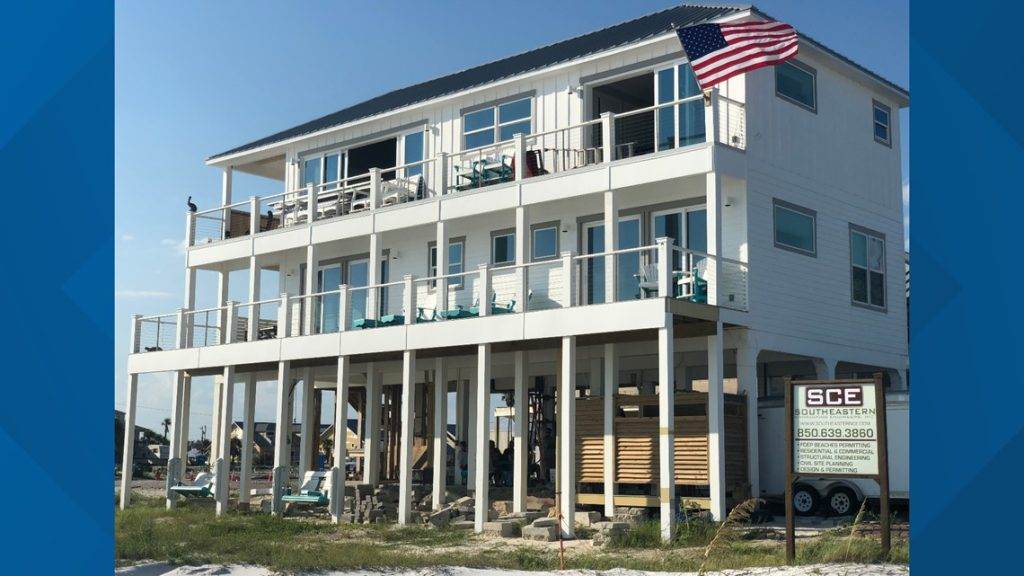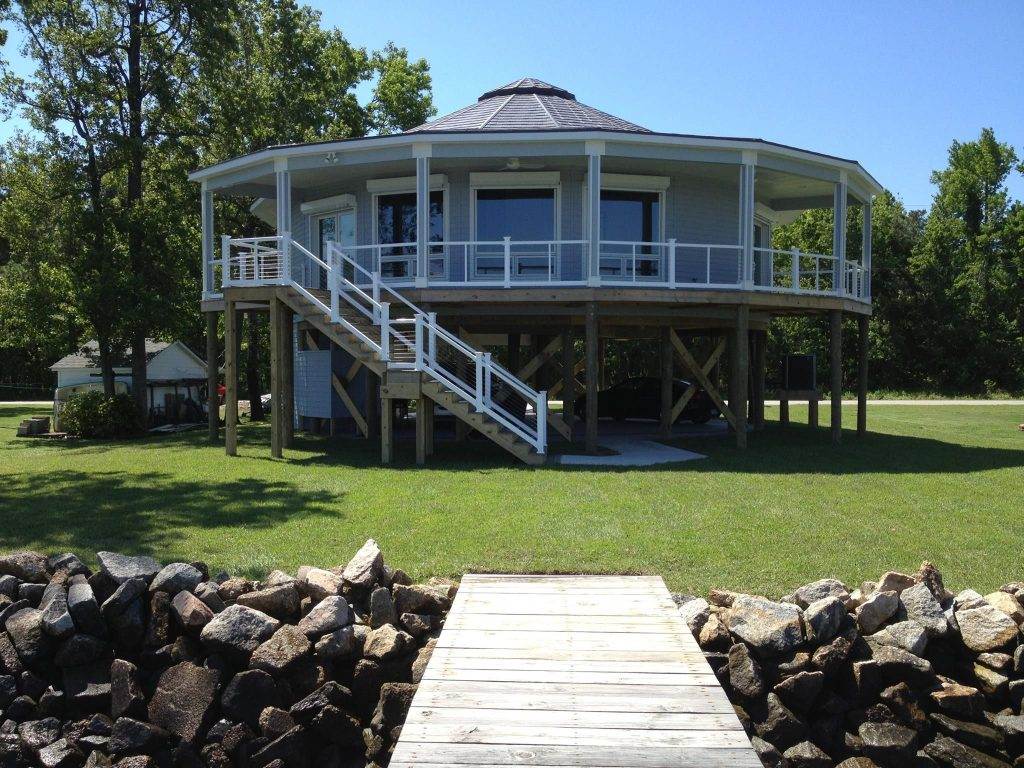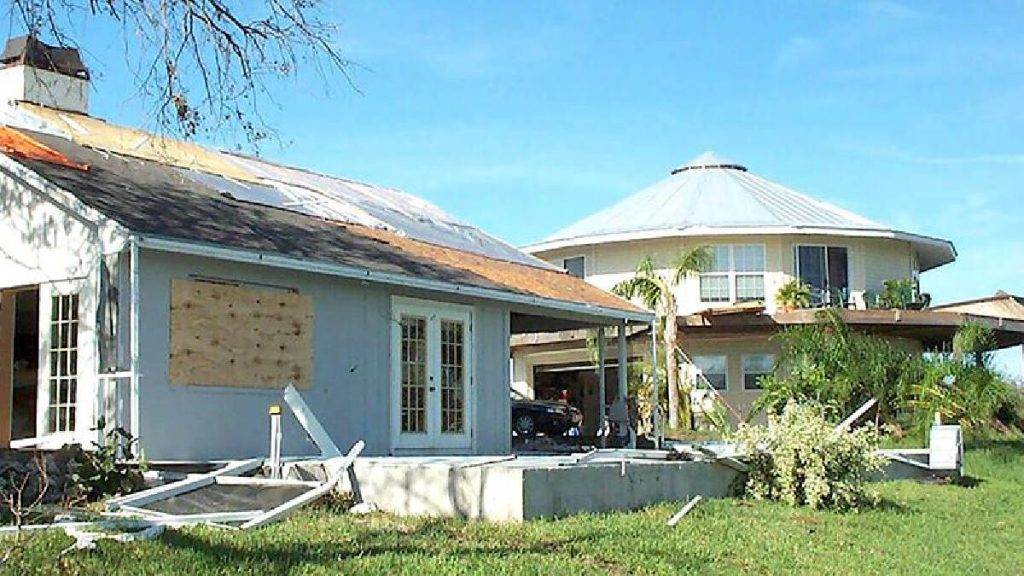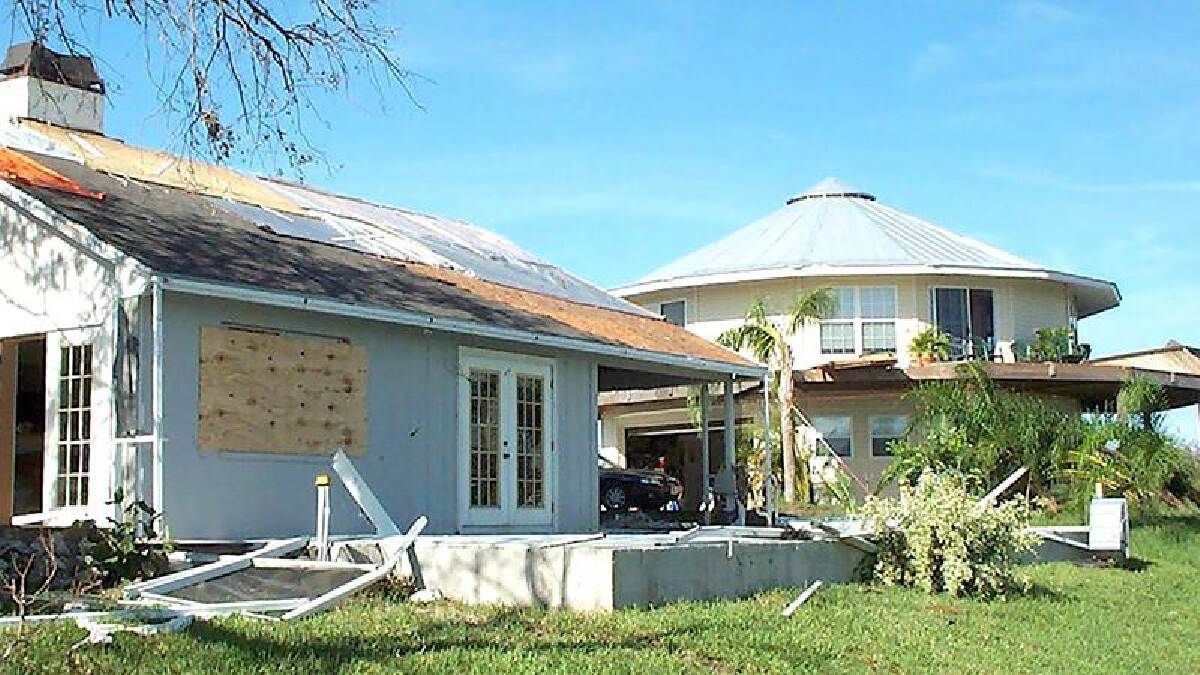Imagine living in a house that can withstand the full force of a Category 5 hurricane, where the howling winds and torrential rains barely make a whisper inside. It sounds like something out of a futuristic science fiction movie, but believe it or not, such a house may actually exist. In a world where climate change is causing increasingly intense storms, architects and engineers are pushing the boundaries of construction to create homes that can withstand the wrath of Mother Nature. So, has a house been built to withstand a Category 5 hurricane? Let’s find out.
Introduction
When it comes to destructive natural disasters, few compare to the sheer power and devastation of a Category 5 hurricane. With wind speeds exceeding 156 mph (251 km/h), these storms can cause catastrophic damage to buildings and infrastructure. As a result, it is vital that we understand the characteristics of Category 5 hurricanes and take steps to build houses that can withstand their immense force. In this article, we will explore the definition and destructive characteristics of Category 5 hurricanes, the importance of building houses to withstand them, the challenges in their construction, innovative technologies and methods for hurricane-proof house construction, a case study of a hurricane-proof house, testing and certification processes, economic implications, and the future of hurricane-proof house construction.
Understanding Category 5 Hurricanes
Definition of Category 5 hurricanes
Category 5 hurricanes, the highest rating on the Saffir-Simpson Hurricane Wind Scale, are characterized by extremely strong winds, often exceeding 156 mph (251 km/h). These hurricanes are capable of causing widespread destruction, including uprooting trees, tearing off roofs, and causing major structural damage to buildings.
Destructive characteristics
In addition to their incredibly high wind speeds, Category 5 hurricanes are known for their storm surge, which is a rise in sea level due to the combination of low pressure and strong winds. This storm surge can cause coastal flooding, resulting in the inundation of homes and infrastructure.
Furthermore, Category 5 hurricanes often produce heavy rainfall, which can lead to flash flooding, landslides, and erosion. The combination of strong winds, storm surge, and heavy rainfall makes these storms particularly destructive.
Historical examples
Several devastating Category 5 hurricanes have left their mark on history. The Great Galveston Hurricane of 1900 is one such example, with estimated death tolls ranging from 6,000 to 12,000 and causing unprecedented destruction in Galveston, Texas. More recent examples include Hurricane Katrina in 2005, which caused widespread devastation in New Orleans and the surrounding areas, and Hurricane Dorian in 2019, which devastated parts of the Bahamas and caused significant damage along the southeastern coast of the United States.
This image is property of i.insider.com.
Importance of Building Houses to Withstand Category 5 Hurricanes
Reducing property damage
Building houses that can withstand the immense force of Category 5 hurricanes is essential for reducing property damage. By implementing resilient design and construction practices, we can minimize the destruction caused by these storms, saving homeowners and communities from significant financial losses.
Ensuring the safety of occupants
Beyond preventing property damage, constructing hurricane-proof houses is crucial for ensuring the safety of the occupants. Residential structures built to withstand Category 5 hurricanes are designed to protect inhabitants from high winds, storm surge, and flying debris. By providing a safe haven during these extreme weather events, we can save lives and mitigate the human impact of hurricanes.
Challenges in Building Houses to Withstand Category 5 Hurricanes
Design considerations
Designing and constructing houses that can withstand Category 5 hurricanes present numerous challenges. Architects and engineers must consider factors such as wind resistance, storm surge protection, and structural stability. Design features such as aerodynamic shapes, reinforced walls, and foundation anchoring are employed to counteract the destructive forces exerted by these storms.
Material selection
Selecting the right materials is crucial for building houses that can withstand Category 5 hurricanes. Building components such as windows, doors, roof coverings, and walls must be able to resist high winds and impacts from flying debris. Materials such as impact-resistant glass, reinforced concrete, and fiber cement siding are commonly used to enhance the structural integrity of hurricane-proof houses.
Cost implications
Building houses to withstand Category 5 hurricanes often comes with higher initial construction costs. The additional design considerations, specialized materials, and construction methods required to make a house hurricane-proof can increase the overall cost of the project. However, it is important to weigh these costs against the potential savings in property damages and the intangible value of increased safety.

This image is property of media.firstcoastnews.com.
Innovative Technologies and Methods for Hurricane-Proof House Construction
Impact-resistant windows and doors
One of the key elements in constructing hurricane-proof houses is the use of impact-resistant windows and doors. These specially designed windows and doors are constructed with laminated glass and reinforced frames, making them more resistant to shattering from flying debris during high winds. By preventing the entry of wind and water, impact-resistant windows and doors help maintain the structural integrity of the house.
Reinforced concrete construction
Reinforced concrete construction is another effective method for building houses that can withstand Category 5 hurricanes. Reinforcing steel bars or mesh are embedded within the concrete structure, providing additional strength and stability. This method enhances the ability of the house to resist the forces exerted by high winds, storm surge, and impacts.
Advanced roofing systems
Roof coverings are particularly vulnerable to damage during hurricanes. Advanced roofing systems, such as metal roofs and interlocking roof tiles, offer increased resistance to high winds and impacts from debris. These systems are designed to securely fasten to the structure, minimizing the risk of the roof being uplifted or torn off by the force of the winds.
Elevated foundation and flood-resistant features
To protect against storm surge and flooding, hurricane-proof houses often incorporate elevated foundations and flood-resistant features. Elevating the living spaces above the base flood elevation reduces the risk of water damage and allows for the effective drainage of floodwaters. Flood-resistant building materials and finishes are also utilized to minimize the impact of flooding on the structure.
Case Study: The Hurricane-Proof House
Location and construction details
One notable example of a hurricane-proof house is the “Dome of a Home” located in Pensacola Beach, Florida. This unique house was built in 2002 after the devastation caused by Hurricane Ivan in 2004. The Dome of a Home features a geodesic dome design, which offers exceptional resistance to the wind loads exerted by hurricanes. Moreover, the house is elevated on pilings to protect against storm surge and includes various other hurricane-resistant features.
Design principles and features
The design principles of the Dome of a Home exemplify the strategies employed in hurricane-proof house construction. Its geodesic dome shape reduces wind resistance, while the use of impact-resistant windows and doors ensures the integrity of the house’s envelope. The elevated foundation and flood-resistant features protect against storm surge, and the reinforced concrete construction provides structural stability.
Storm performance evaluation
The effectiveness of the Dome of a Home in withstanding a Category 5 hurricane was tested during subsequent hurricanes that struck the Florida Panhandle. Despite being directly hit by strong winds and storm surge, the Dome of a Home remained intact and suffered minimal damage. This case study demonstrates the importance of utilizing innovative technologies and methods in hurricane-proof house construction.

This image is property of hips.hearstapps.com.
Testing and Certification for Hurricane-Proof Houses
Standards and protocols
To ensure the reliability and performance of hurricane-proof houses, testing standards and protocols have been established. Organizations such as the American Society for Testing and Materials (ASTM) and the National Hurricane Research Laboratory (NHRL) establish guidelines for testing the structural integrity, wind resistance, water tightness, and impact resistance of building components.
Recognized certification bodies
Certification bodies, such as the Miami-Dade County Product Control Division and the Florida Building Commission, determine the compliance of hurricane-proof houses with building codes and standards. These certifications provide assurance to homeowners and building professionals that the houses have undergone rigorous testing and meet the necessary criteria for hurricane resistance.
Benefits of certification
The certification of hurricane-proof houses offers numerous benefits. For homeowners, certification provides peace of mind knowing that their homes have been built to withstand Category 5 hurricanes. Additionally, certified houses often qualify for insurance discounts due to their increased resilience. For builders and contractors, certification enhances their reputation and credibility, making their projects more attractive to potential buyers.
Economic Implications and Considerations
Insurance premiums
One of the economic implications of building houses to withstand Category 5 hurricanes is the potential reduction in insurance premiums. Insurers recognize the reduced risk associated with hurricane-proof houses and may offer lower premiums to homeowners due to the decreased likelihood of property damage in the event of a hurricane.
Property value and resale potential
Hurricane-proof houses also have the potential to retain and increase their property value over time. As homeowners become more conscious of the risks posed by hurricanes, properties with hurricane-resistant features become more desirable in at-risk areas. This increased demand may result in higher property values and enhanced resale potential for hurricane-proof houses.
This image is property of i.insider.com.
The Future of Hurricane-Proof House Construction
Technological advancements
As technology continues to advance, new innovations in hurricane-proof house construction can be expected. Advancements in materials, such as the development of stronger and lighter construction materials, may improve the efficiency and effectiveness of hurricane-proof houses. Additionally, the integration of smart home technologies and monitoring systems can enhance the safety and resilience of these houses.
Green and sustainable practices
In the future, hurricane-proof house construction may increasingly incorporate green and sustainable practices. Sustainable building materials, energy-efficient designs, and renewable energy systems can reduce the environmental impact of these houses while improving their resilience. This combination of hurricane-proof and sustainable features will contribute to a more sustainable and resilient built environment.
Conclusion
In an era of increasingly frequent and intense hurricanes, building houses that can withstand Category 5 hurricanes is of paramount importance. By understanding the characteristics of these storms, recognizing the value of hurricane-proof construction, and utilizing innovative technologies and methods, we can ensure the safety and resilience of our homes and communities. With the evolving field of hurricane-proof house construction and ongoing efforts to improve building standards and practices, we can face the challenges of a changing climate with confidence.

This image is property of media.nationthailand.com.
